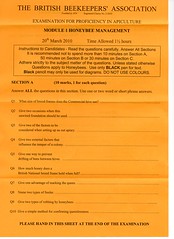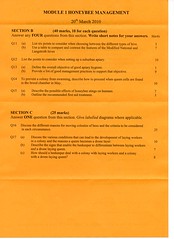blackbrood
House Bee
Mid Bucks Bee keepers Association have been kind enough to post some study notes on their blog for some of the various BBKA modules.
This link is for module 1
The others include basic assessment exam, modules 2,3,5,6 and 7 are down the right hand side. All in PDF format.
I already had some thanks to a fellow bee keeping forum member but now my e-library has been expanded.
If any one knows of more online ones, I would love to be able to read some more.
I am also interested in past papers if any one has any.
BB
This link is for module 1
The others include basic assessment exam, modules 2,3,5,6 and 7 are down the right hand side. All in PDF format.
I already had some thanks to a fellow bee keeping forum member but now my e-library has been expanded.
If any one knows of more online ones, I would love to be able to read some more.
I am also interested in past papers if any one has any.
BB






